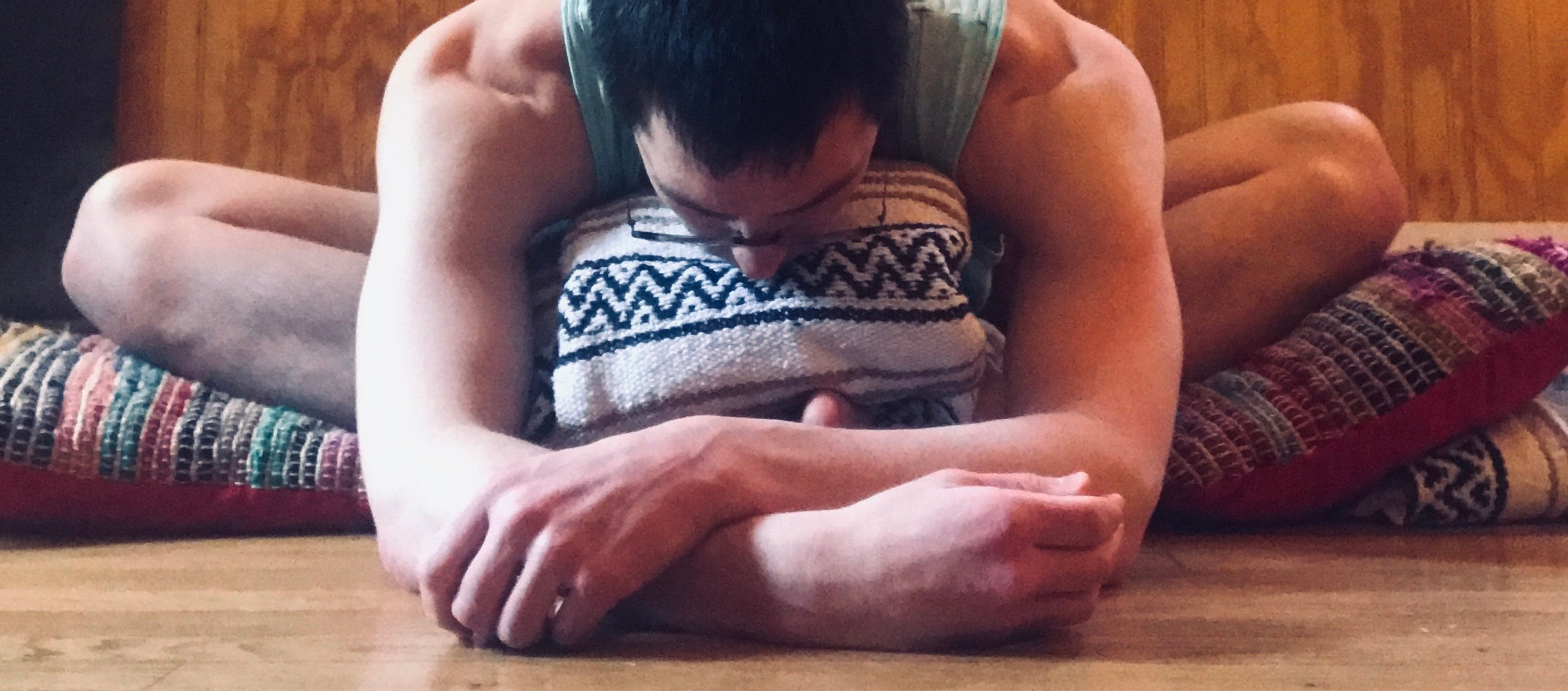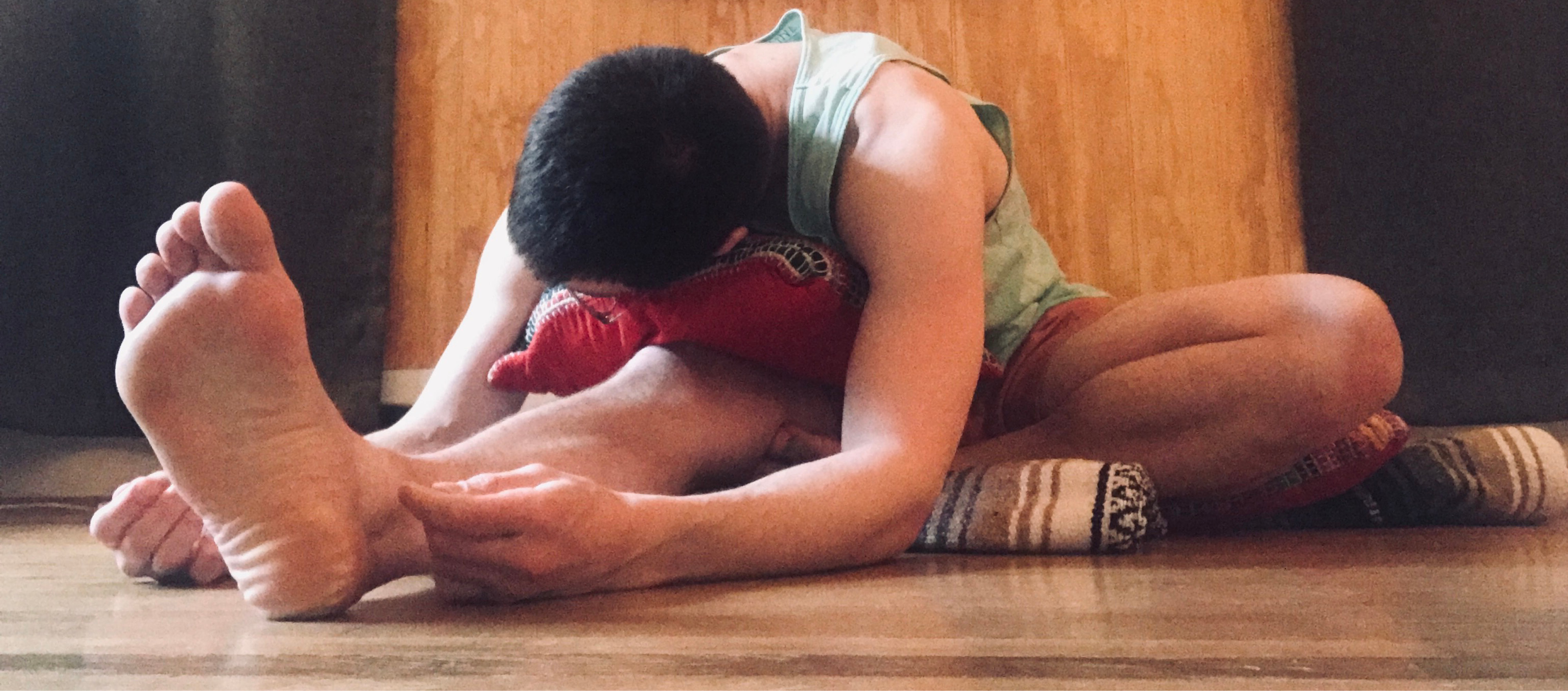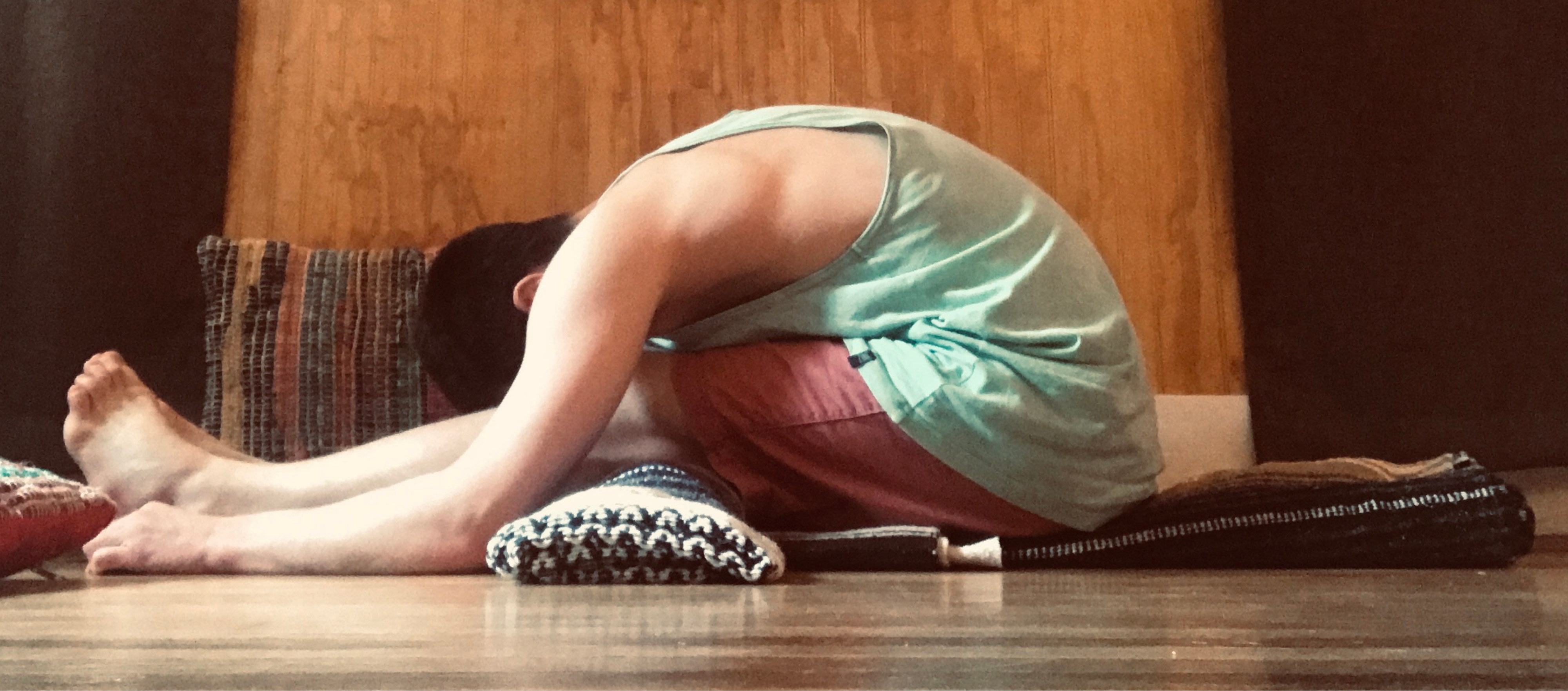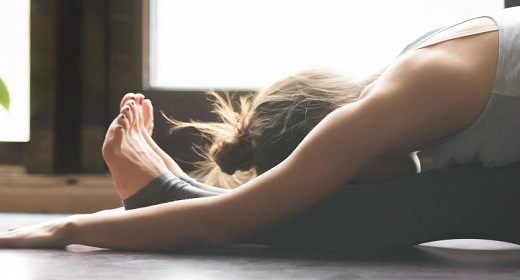by Michael Petersen: In hatha yoga, yang is the fiery, dynamic quality generated by practices such as vinyasa flow…
The opposite of yang is yin: passive, cooling, softening. Yin Yoga is an opportunity to release, let go, and create balance—an excellent complement to more active practices.
The intent of Yin Yoga is to cultivate suppleness by relaxing the body rather than engaging the muscles. When you practice Yin, you use as little effort as possible to find your appropriate edge.
Here is an accessible Yin Yoga sequence you can do anytime, anywhere. You can use household items such as cushions, blankets, or towels as props. As you progress through each posture, keep it simple. Remember, Yin is not about forcing yourself into the posture, but rather relaxing into it, so you can sustain the pose for three to five minutes.
Before starting the practice, take a few moments to center yourself and tune in to your breath.
Butterfly
- Bring the soles of your feet together and the knees apart. Let go of any effort and relax into this shape.
- Slide your heels away from your midline, until you feel a slight stretch on the outside of the knees. Feel free to place blocks, blankets, or small cushions on the outside of the knees for support.
- Sitting tall, take a slow, deep breath into the belly. Exhale through your mouth, releasing any tension, and fold forward, hinging from the hips.

- Relax into the posture. Notice your breath and the sensations that arise. Rest in stillness for three to five minutes.
- To release, draw your navel toward your spine and curl your chin toward the chest. On an inhale, slowly unfurl back up to a comfortable seated position.
- Take any gentle movements that feel right for you before transitioning into the next posture.
Sphinx
- Lie facedown on the floor. If you need support, place the bottom edge of a cushion or folded blanket just beneath the front of your chest and ribs.
- Root your elbows directly below your shoulders, framing the ribs. Keep your forearms in line with the elbows. The gentle lift of the chest and ribs creates a mild backbend.

- Invite space in the low back by lengthening your legs away from the hips.
- Breathe in deeply, relaxing your body, especially the feet and legs, as much as you can.
- If you’re using props, allow the cushion or blanket to support the upper body. If you feel any tension in the neck, lower either ear toward the prop and roll your head from side to side.
- Relax into the posture. Notice your breath and the sensations that arise. Rest in stillness for three to five minutes.
- To release, slide your palms underneath your shoulders, curl your chin into your chest, draw the navel toward the spine and press up into a comfortable seated position.
- Take any gentle movements that feel right for you before transitioning into the next posture.
Half Dragonfly
- From a seated position, extend both legs out wide.
- Keeping your right leg straight, bend your left knee and place the sole of your left foot to the inside of your right thigh. For more support, slide a rolled-up blanket underneath the right leg and/or place a cushion, folded blanket, or towel underneath the left knee.

- Breathe in, lengthen your spine, and turn your torso toward the right leg. You can stay here, sitting upright, or fold forward over the right leg. You can also rest your upper body on a cushion or a blanket for more support.
- If you feel any tension in your neck, gently roll your head from side to side.
- Relax into the posture. Notice your breath and the sensations that arise. Rest in stillness for three to five minutes.
- To release, ground your palms into the floor, draw your navel toward your spine, and press back up to sit.
- Repeat on the left side.
Long-Legged Forward Fold
- From Half Dragonfly, extended both legs out in front of you and bring them to touch. For support, place a rolled-up blanket underneath the knees. You can also lean back against a wall if sitting upright is challenging. You can stay here, sitting tall, or to deepen, fold forward over your legs, hinging at the hips.

- Relax into the position, allowing a gentle rounding in the back. Your forehead can rest on a cushion, blanket, or towel. Turn your head from side to side to release any tension in the neck.
- Relax into the posture. Notice your breath and the sensations that arise. Rest in stillness for three to five minutes.
- To release, slide your hands back, ground your palms into the floor, draw your navel toward your spine, and press back up to sit.
- Take any gentle movements that feel right for you before transitioning into the next posture.
Take yoga classes with our faculty on Kripalu Connect!
Savasana
- Gather whatever support you may need, such as a blanket to cover yourself or a cushion to place underneath the knees, and lie down on your back.
- Bring your attention inward. Relax your body and notice the effects of your Yin Yoga practice.
- Stay in Savasana for as long you like—seven to 10 minutes, or even longer.
Michael Petersen, RYT 500, leads yoga classes and outdoor experiences for Kripalu R&R and is on staff for the Kripalu School of Yoga. He specializes in vinyasa and Yin Yoga and is known for his clear yet playful teaching style.



















































